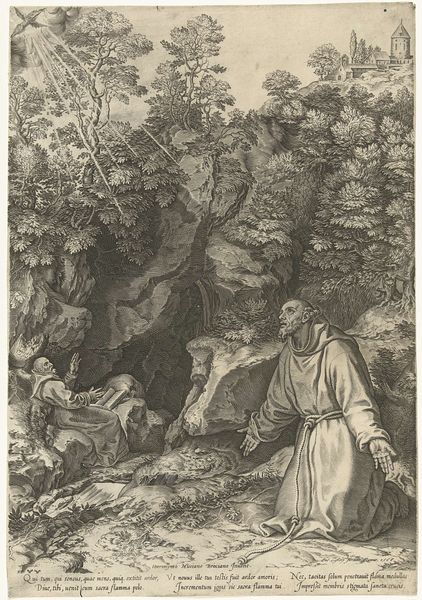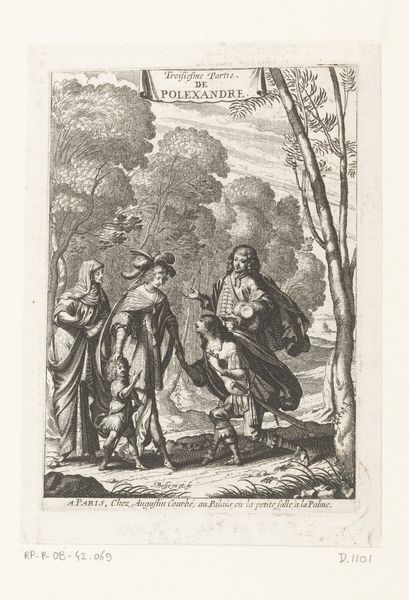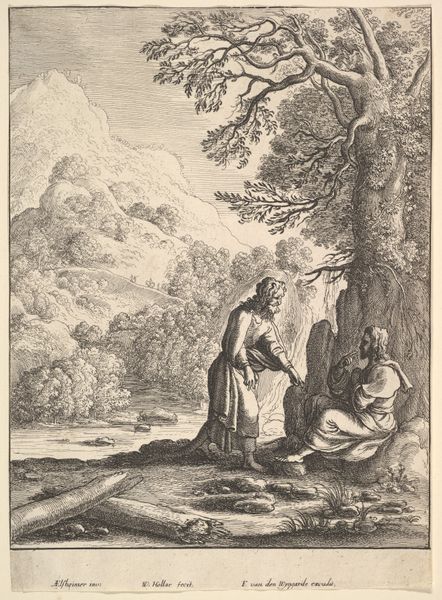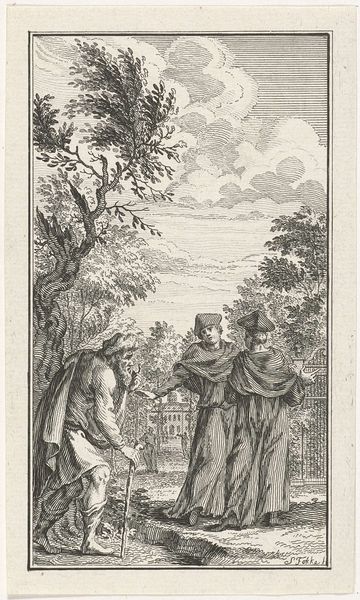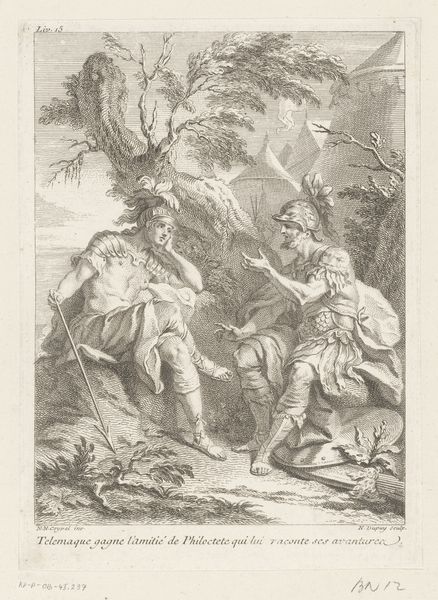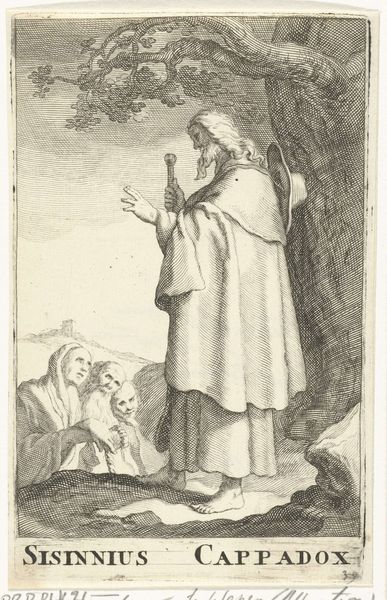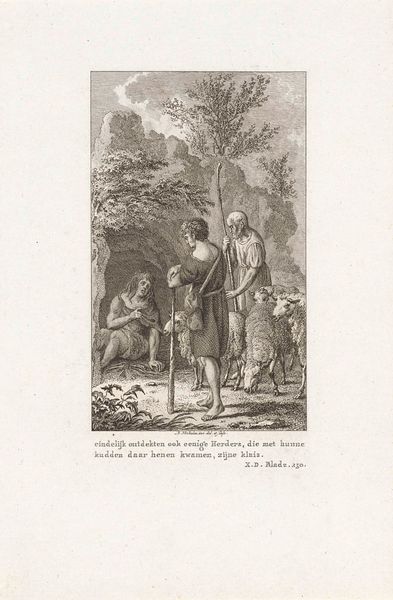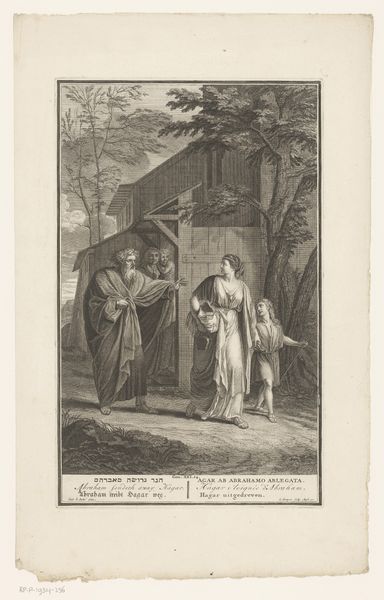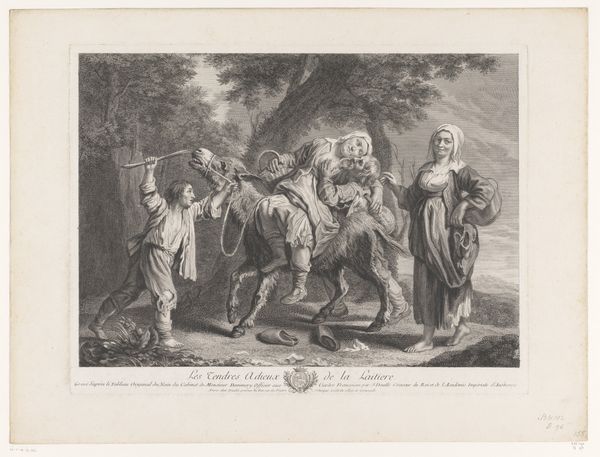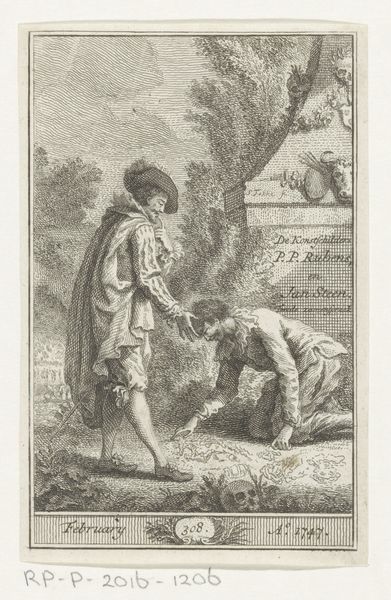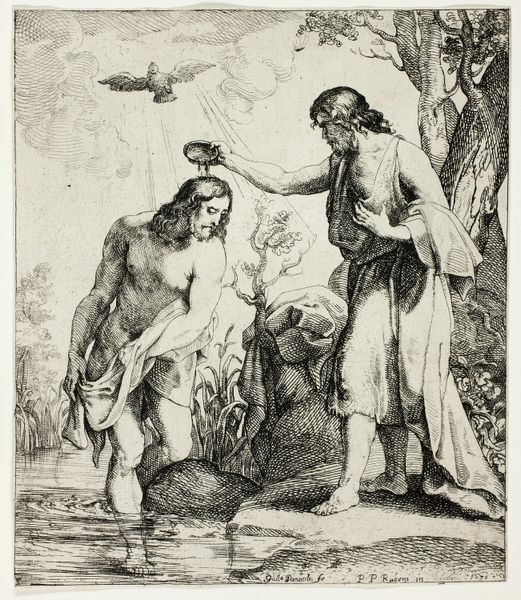
print, engraving
#
baroque
# print
#
landscape
#
figuration
#
line
#
genre-painting
#
engraving
Dimensions: height 114 mm, width 95 mm
Copyright: Rijks Museum: Open Domain
Petrus Johannes van Reysschoot created this engraving, titled "Waarzeggen," sometime in the 18th century. The image depicts a fortune teller and a young man in an indeterminate landscape. The work points towards a society where the boundaries of social class were becoming more fluid. The young man's dress suggests he may be of higher social standing than the fortune teller, yet he seeks out the fortune teller's services. The exotic dress of the fortune teller, and the dog next to him, are visual codes that mark him as an outsider. The encounter between the young man and the fortune teller suggests the possibility of social mobility and the anxieties that come with it. The text at the bottom of the image, "Die licht gelooft wort licht bedrogen," or "He who readily believes is easily deceived" adds another layer of social commentary to the image. To better understand this artwork, we might consult records of daily life from the period, for example, the diaries and letters of ordinary people, or legal documents relating to vagrancy or fraud. The meaning of art is always contingent on the social conditions in which it is made.
Comments
No comments
Be the first to comment and join the conversation on the ultimate creative platform.
